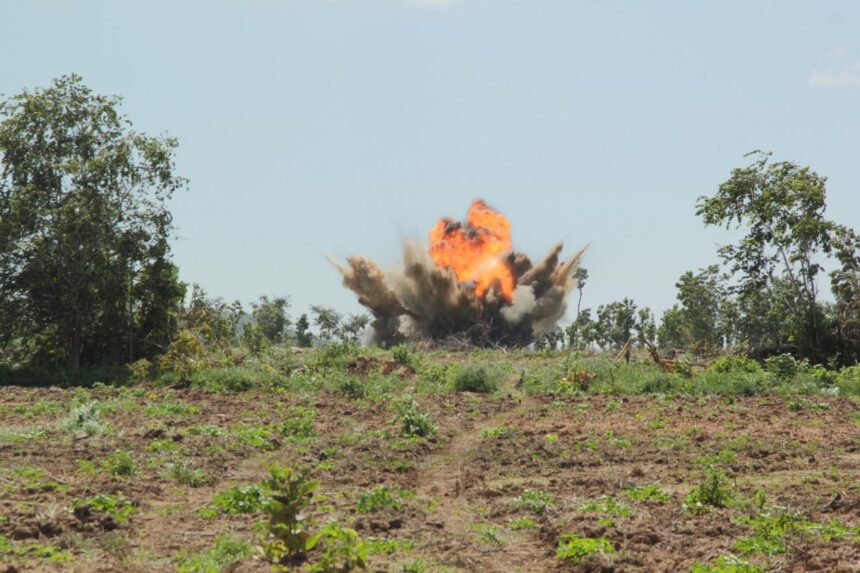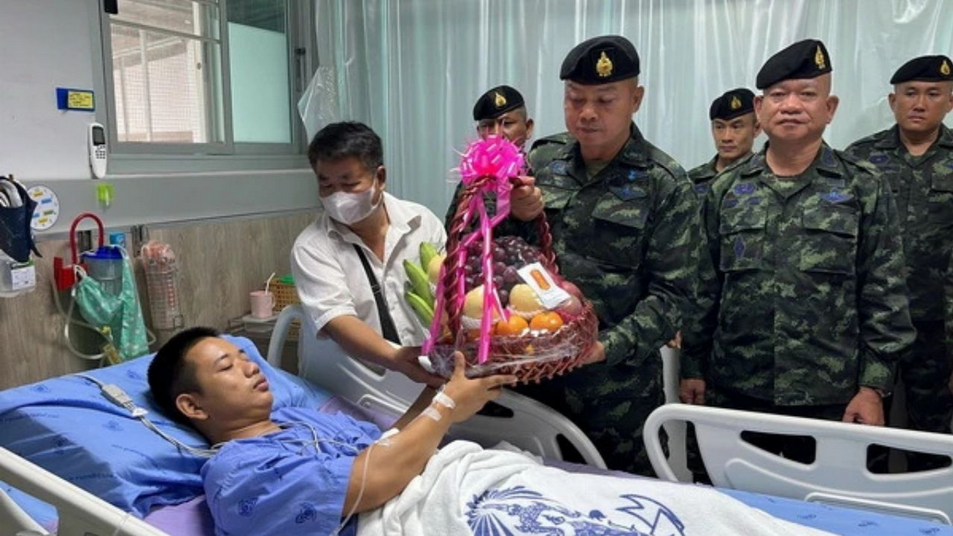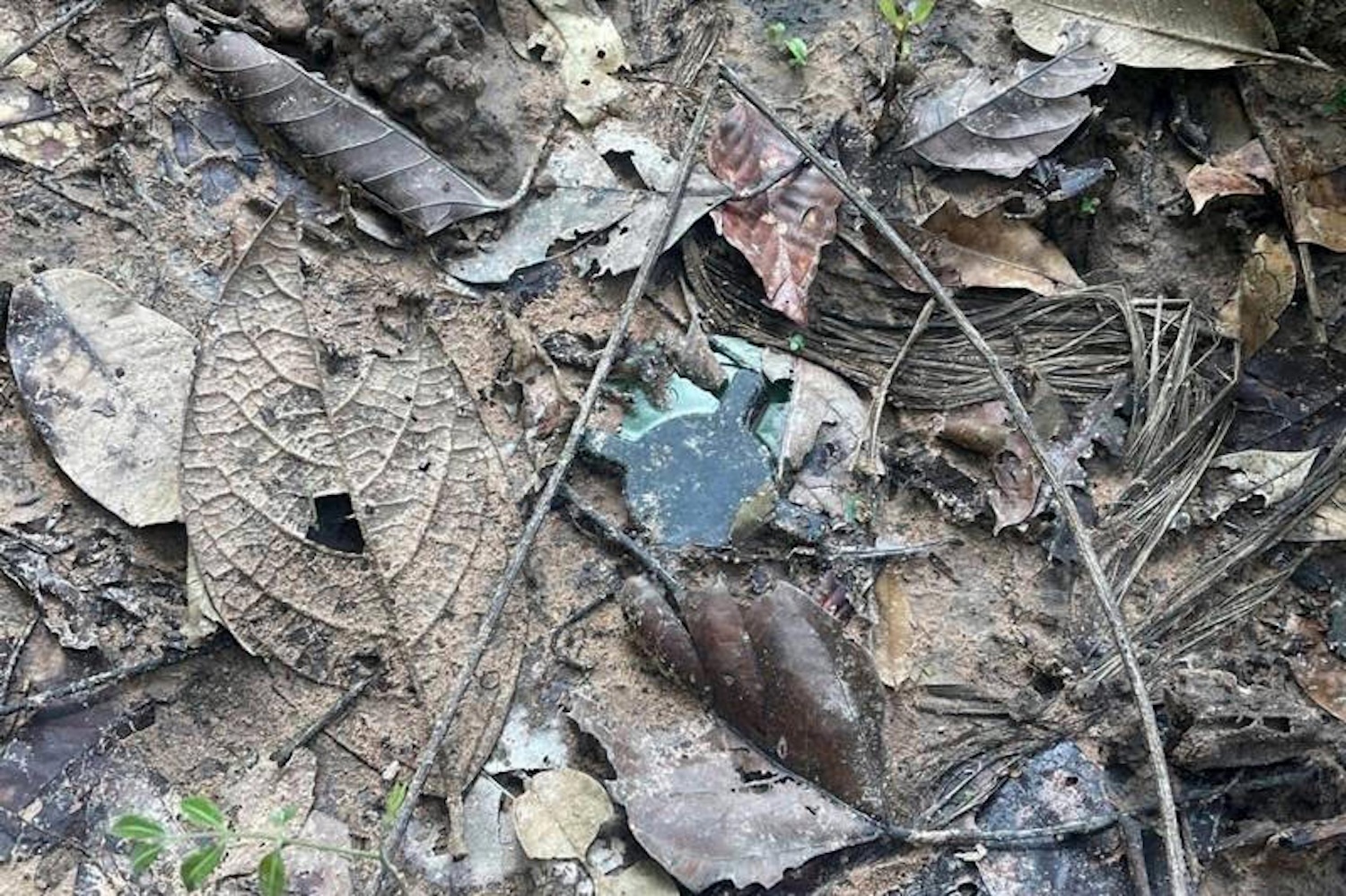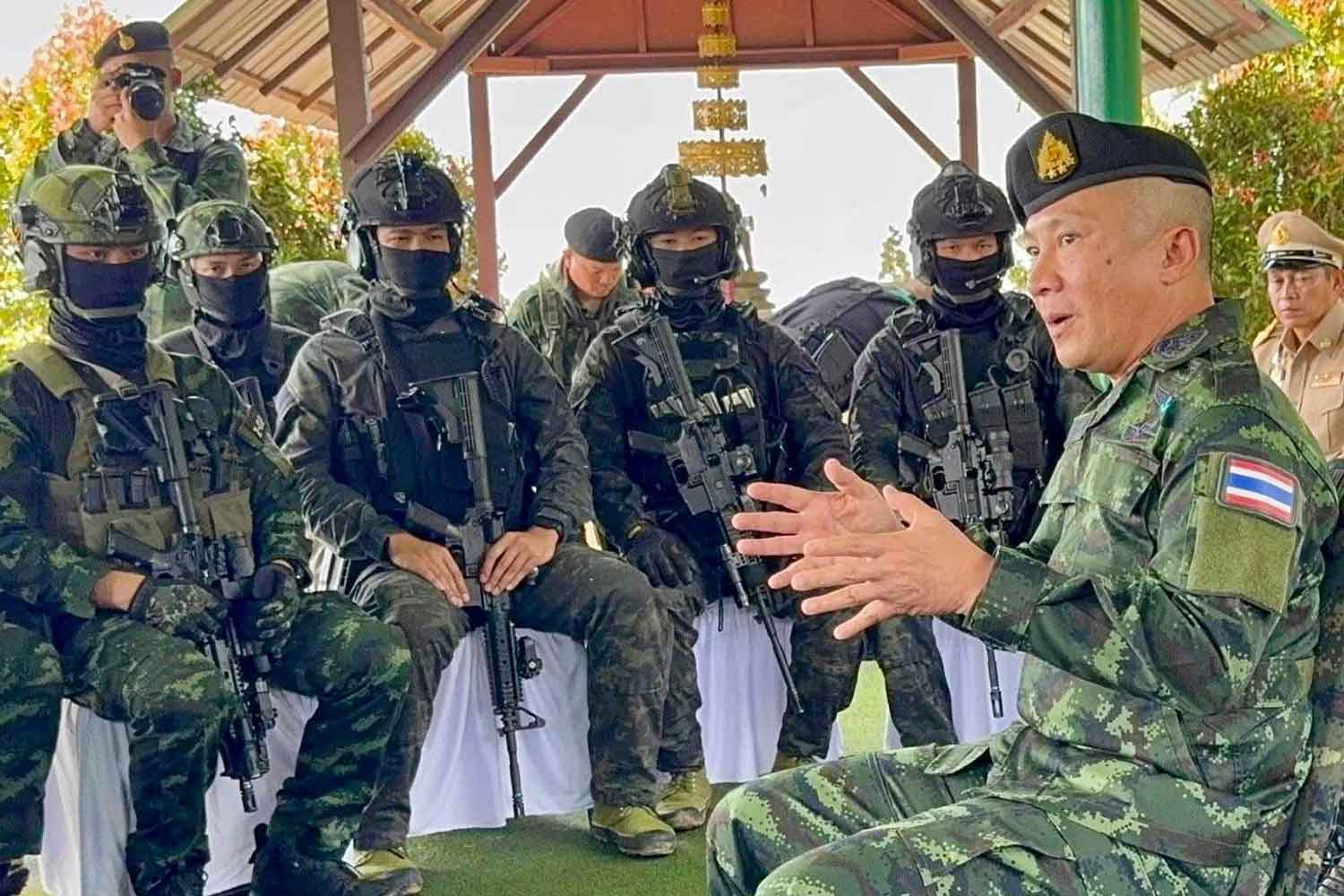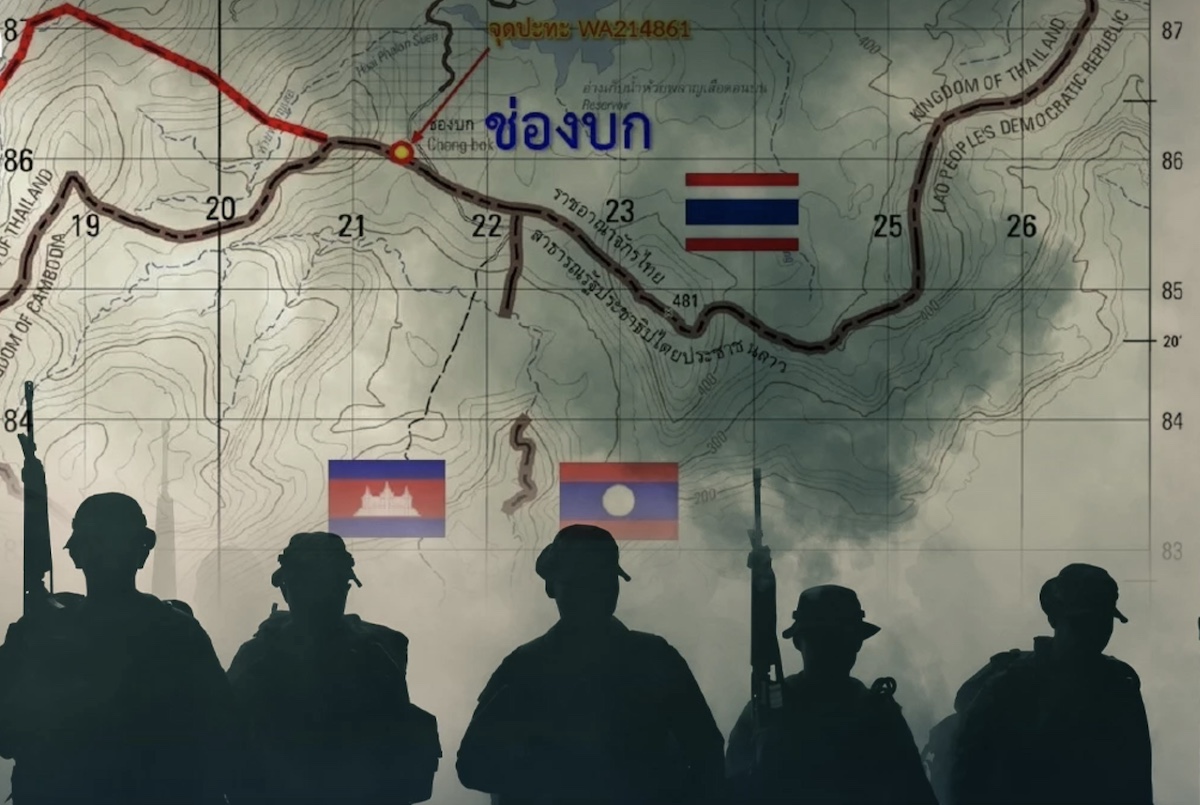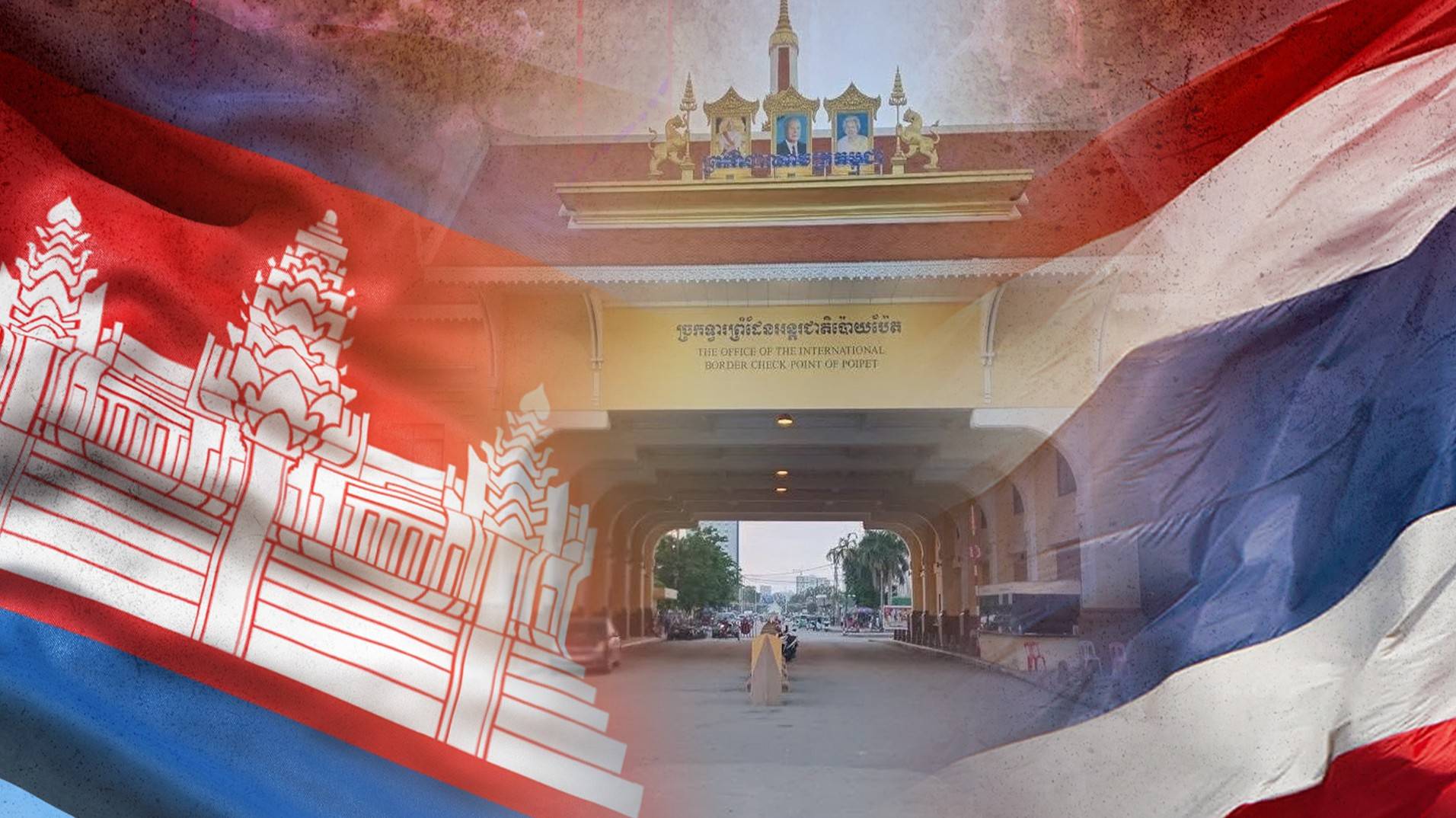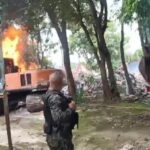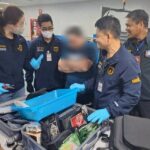UBON RATCHATHANI – Three Thai soldiers suffered injuries, with one in critical condition, after a landmine exploded close to the Cambodian border on 15 July 2025. The blast has reignited old worries about border tensions between Thailand and Cambodia.
The explosion took place in the Chong Bok area of Ubon Ratchathani province. Thai officials claim the mines involved were Russian-made PMN-2 anti-personnel devices, and they believe Cambodian troops recently placed them. Four more mines were found nearby, adding to fears that the dispute could grow worse in a region already marked by past violence and unexploded bombs.
On the morning of the incident, a 14-member patrol from the 2302nd Military Reconnaissance Unit, under the Suranaree Task Force, set out from Morakot Operations Base heading towards Hill 481, a known trouble spot near the border. At about 9:45 AM, at coordinates WA 220 861, one soldier triggered a landmine.
The blast injured three men: Private First Class Thanapat Huiwan, 21, lost his left leg; Sergeant Patipat Srilasak suffered chest pain from the blast; Private Thanapat Huaiwan received shrapnel wounds in his left knee and right leg. The injured were quickly taken to a military hospital.
Lieutenant General Boonsin Phadklang, who leads the 2nd Army Region, first said the explosion was caused by an old device from previous conflicts. But a later investigation by the Thailand Mine Action Centre (TMAC) showed that the mine was a Russian-made PMN-2 anti-personnel device, placed recently in an area previously marked as safe.
TMAC teams found four more PMN-2 mines in the same area, raising serious questions about new mine-laying in the region.
The PMN-2 Mine: Deadly and Hard to Detect
The PMN-2 mine was designed by the Soviet Union in the late 1970s. It is triggered by pressure and built to injure or kill soldiers on foot. The device is about 12 centimetres wide and 5 centimetres tall, mostly made of plastic, which makes it hard to find with standard metal detectors.
It carries a 100-gram TNT charge and goes off with just 5 to 15 kilograms of pressure. This is enough to cause severe injuries, as seen with Private Huiwan’s loss. The mine is cheap, easy to hide, and long-lasting, so it has been used in conflicts around the world. Both Thailand and Cambodia signed the 1997 Ottawa Convention banning its use.
Thai military officials say the PMN-2 is not used by the Royal Thai Army and is not a leftover from older conflicts like the Thai-Vietnamese fighting in 1973 or Cambodia’s civil war. TMAC teams also found fresh soil around the mines, pointing to recent planting. This has led Thai authorities to blame Cambodian forces.
Thailand Blames Cambodia, Cambodia Denies
Thai officials from TMAC and the army have accused Cambodia of planting the mines as a hostile act in the disputed zone. “The PMN-2 mines are not part of our army’s stock and are not left over from old wars,” a Thai military source told the Bangkok Post. The Thai side is investigating further to trace the mines’ origin and see if Cambodian troops broke the Ottawa Convention by placing them.
Cambodia rejects these charges. Heng Ratana, head of the Cambodian Mine Action Centre, responded, “If it happened inside Thailand, then Thailand should know about it.” He hinted that the Thai patrol may have crossed into Cambodian land, where millions of old mines remain.
Cambodia’s official view is that Thailand either failed to patrol its side properly or is trying to blame Cambodia for its own mistakes.
This back-and-forth has worsened the diplomatic row, with both sides accusing each other of crossing the border. The Thai military has increased security in the area and called for Cambodia’s help in finding who put the mines there.
At the same time, Cambodia’s Senate President Hun Sen has accused Thailand of trespassing and has threatened to bring the dispute to the International Court of Justice (ICJ).
Longstanding Border Dispute
This mine blast adds to a long list of incidents in the border dispute between Thailand and Cambodia, mainly focused on the Preah Vihear Temple and nearby places such as Ta Moan Thom and the Chong Bok Pass.
The temple, built in the 11th century and located in the Dangrek Mountains, was awarded to Cambodia by the ICJ in 1962. However, the surrounding land is still contested, with national pride on both sides keeping the issue alive. Clashes between 2008 and 2011 resulted in dozens of deaths and thousands of people being displaced.
Tensions rose again in February 2025 when Cambodian troops and civilians entered the Ta Moan Thom temple complex, singing their anthem. Thai nationalist groups responded in kind, and there were tense standoffs. On 28 May 2025, gunfire broke out in the Chong Bok area, killing a Cambodian soldier, which further harmed relations.
Cambodia then boycotted Thai goods, fuel, and electricity, and Thailand closed border crossings to tourists, worsening economic and diplomatic ties.
Chong Bok, part of the Emerald Triangle where Thailand, Cambodia, and Laos meet, is still a hotspot. Despite joint demining efforts agreed upon in 2000, the region remains scattered with unexploded bombs from Cambodia’s civil war and earlier conflicts. Finding the newly planted PMN-2 mines hints at possible treaty breaches or the actions of groups outside government control, adding to the tension.
Regional and Global Reactions
The mine incident has caught international notice. China has offered to help mediate the dispute, with Foreign Minister Wang Yi suggesting “friendly dialogue” during an ASEAN summit in Malaysia.
Both countries have said they will talk at a Joint Boundary Committee meeting in Phnom Penh, but the current mine incident is not on the agenda. Cambodia’s warning that it may take the issue to the ICJ has been met by Thailand’s refusal to accept the court’s authority since 1960.
The episode also highlights the ongoing danger from landmines in Cambodia. Between four and six million unexploded devices are estimated to remain in the country. Groups like APOPO, which uses trained rats to detect TNT, have cleared more than 1.1 million mines since 1992. The latest injuries show the continuing risk to both soldiers and civilians near the border.
With the investigation ongoing, the Thai army has stepped up its presence at the border. Deputy Defence Minister General Nattaphon Nakpanich visited the wounded soldiers and checked on troops at Si Sa Ket’s Sangam Pass.
The incident has led to strong public support for the injured, with social media campaigns urging a swift recovery. False reports, including a claim that a Cambodian soldier was also hurt by his mine, have increased tensions.
The border region remains on edge. The use of PMN-2 mines raises serious concerns about treaty breaches and the chance of more violence. Both sides need to keep a cool head and focus on diplomatic solutions if they want to avoid renewed conflict and work towards lasting peace.
Related News:
Thailand Seals Borders with Cambodia, Bans Tourists from Entering Siem Reap




